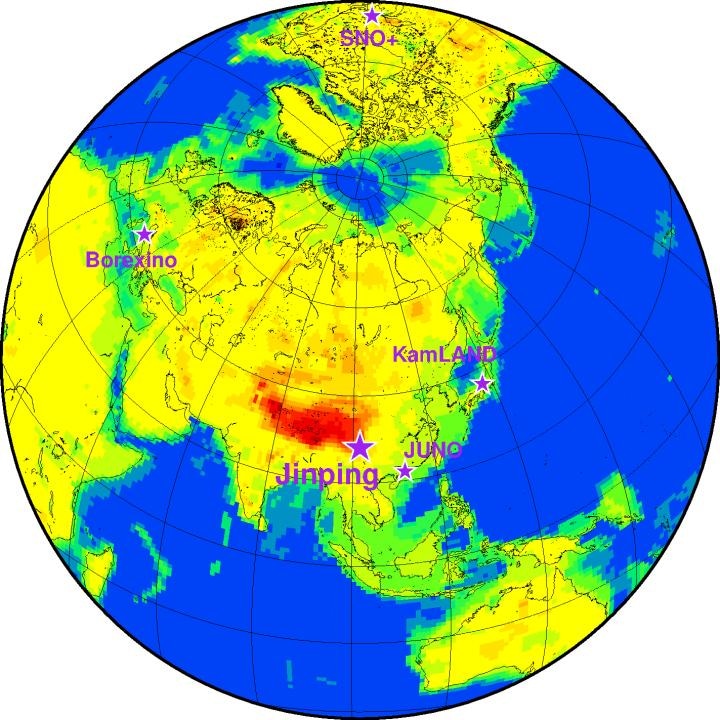Sep 12 2016
 By 2022, scientists expect to be able to detect at least 536 antineutrino events per year at these five underground detectors: KamLAND in Japan, Borexino in Italy, SNO+ in Canada, and Jinping and JUNO in China. (Credit: Ondrej Sramek)
By 2022, scientists expect to be able to detect at least 536 antineutrino events per year at these five underground detectors: KamLAND in Japan, Borexino in Italy, SNO+ in Canada, and Jinping and JUNO in China. (Credit: Ondrej Sramek)
The Earth requires fuel to drive its magnetic field, plate tectonics, and volcanoes. Just like a hybrid car relies on two energy sources, the Earth taps two sources of energy to operate its engine – nuclear energy from the heat generated during natural radioactive decay, and primordial energy from assembling the planet.
Researchers have prepared several models to estimate the amount of fuel that remains inside the Earth to run its engines, however these estimates vary and the true amount still is not known.
In a new research paper, a team of geologists and neutrino physicists from the University of Maryland, Charles University in Prague and the Chinese Academy of Geological Sciences have claimed that by 2025 they would be able to provide details about the quantity of radioactive power and nuclear fuel present inside the Earth. The paper was published in the journal Nature Scientific Reports on September 9, 2016.
I am one of those scientists who has created a compositional model of the Earth and predicted the amount of fuel inside Earth today. We're in a field of guesses. At this point in my career, I don't care if I'm right or wrong, I just want to know the answer.
William McDonough, Professor of Geology, University of Maryland
In order to calculate the amount of fuel inside Earth by 2025, the researchers would have to rely on detecting geoneutrinos, which are some of the smallest possible subatomic particles known to science.
These antineutrino particles are formed as a result of nuclear reactions within stars (including the sun), black holes, supernovae, and human-made nuclear reactors. They also form due to radioactive decay processes deep inside the Earth.
In order to detect the antineutrinos, a giant detector about the size of a small office building has to be housed nearly a mile underground to protect it from cosmic rays that could generate false positive results.
The team can detect antineutrinos inside the detector when they crash into a hydrogen atom. The collision creates two distinctive light flashes that unambiguously announce the event.
The number of events the researchers are able to detect directly relates to the number of atoms of thorium and uranium within the Earth. The decay of these elements - along with potassium - fuels most of the heat within the Earth.
So far, detecting antineutrinos has been very slow, with the researchers able to record approximately 16 events annually from the underground detectors Borexino in Italy and KamLAND in Japan. However, three new detectors are likely to be in use by 2022 - the Jinping and JUNO detectors in China and the SNO+ detector in Canada. The researchers hope that they will add 520 additional events annually to the data stream.
Once we collect three years of antineutrino data from all five detectors, we are confident that we will have developed an accurate fuel gauge for the Earth and be able to calculate the amount of remaining fuel inside Earth.
William McDonough, Professor of Geology, University of Maryland
The new Jinping detector will be placed under the slopes of the Himalayas. It will be four times larger than the current detectors. The underground JUNO detector will be placed near the coast of southern China, and will be 20 times larger than current detectors.
"Knowing exactly how much radioactive power there is in the Earth will tell us about Earth's consumption rate in the past and its future fuel budget," said McDonough. "By showing how fast the planet has cooled down since its birth, we can estimate how long this fuel will last."